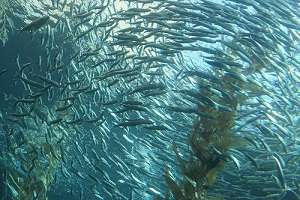Study: 50 percent of mass fish kills attributed to natural causes

An analysis of mass fish kills in WA has found that more than 50 per cent can be attributed to natural causes.
Department of Fisheries fish kill incident co-ordinator Kylie Chatfield looked into more than 300 fish kills in WA since 1997.
Ms Chatfield found that the majority were the result of natural phenomenon such as algae, reduced oxygen levels, salinity, pH, strandings and life-cycle events.
She says about eight per cent of fish kills were the result of chemicals, which could include things like agricultural pesticides and phosphates and sewage.
She says an even smaller proportion were caused by disease but they had the potential to have a large impact on a single species.
This includes the pilchard herpesvirus that wiped out about 70 per cent of the Australian pilchard population in the 1990s.
Last year there were 34 fish kills, the third highest since records began in 1997, and so far this year there have been 24.
The most fish kills was in 2008, when 36 were recorded, followed by 35 in 2004.
More than half of all fish kills occurred in the metropolitan area and more than 80 per cent were in inland waters.
Ms Chatfield says one of the clearest cut cases in recent years was a fish kill in the Swan-Canning River last year that was dubbed the "100 days of Karlodinium".
Thousands of fish died between May and July and cells of the algae Karlodinium veneficum could actually be seen under the microscope clogging the gills.
Jo Bannister, the Department of Fisheries incident co-ordinator for the event, says algae levels of over 100,000 cells per millilitre were recorded at places in the river at the time of the fish kill.
"They were stuck to the tips of the gills filaments, which directly affects the gills by blocking the respiratory surface so the fish can't breathe," she says.
"They also produce a toxin, they're called karlotoxins, and they also damage the gill tissue."
Ms Chatfield says fish kills are often the result of several factors and the cause of many remains unknown because good samples were not collected in time or a definitive answer could not be reached from the evidence available.
She hopes to overlay fish kill events with other data such as weather, soil types and land usage to learn more about the conditions that caused them.
Provided by Science Network WA
















